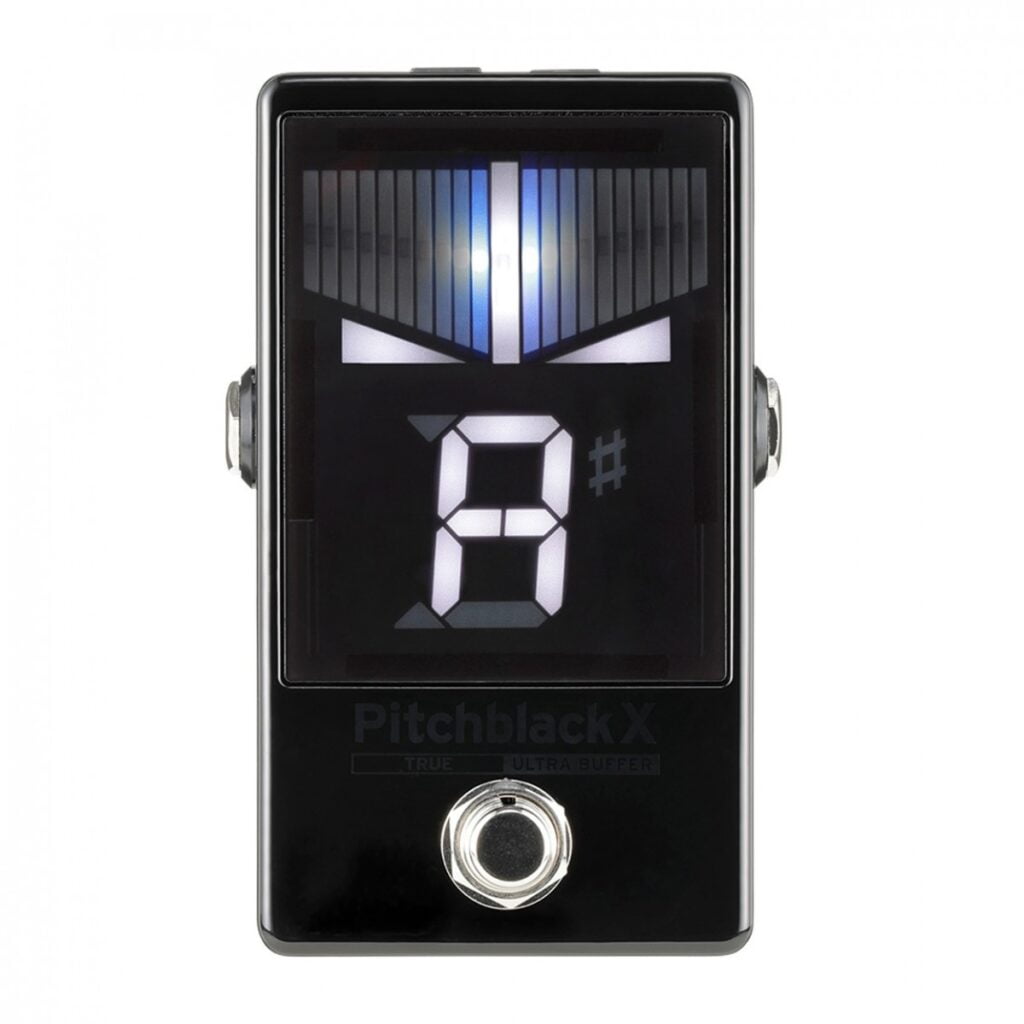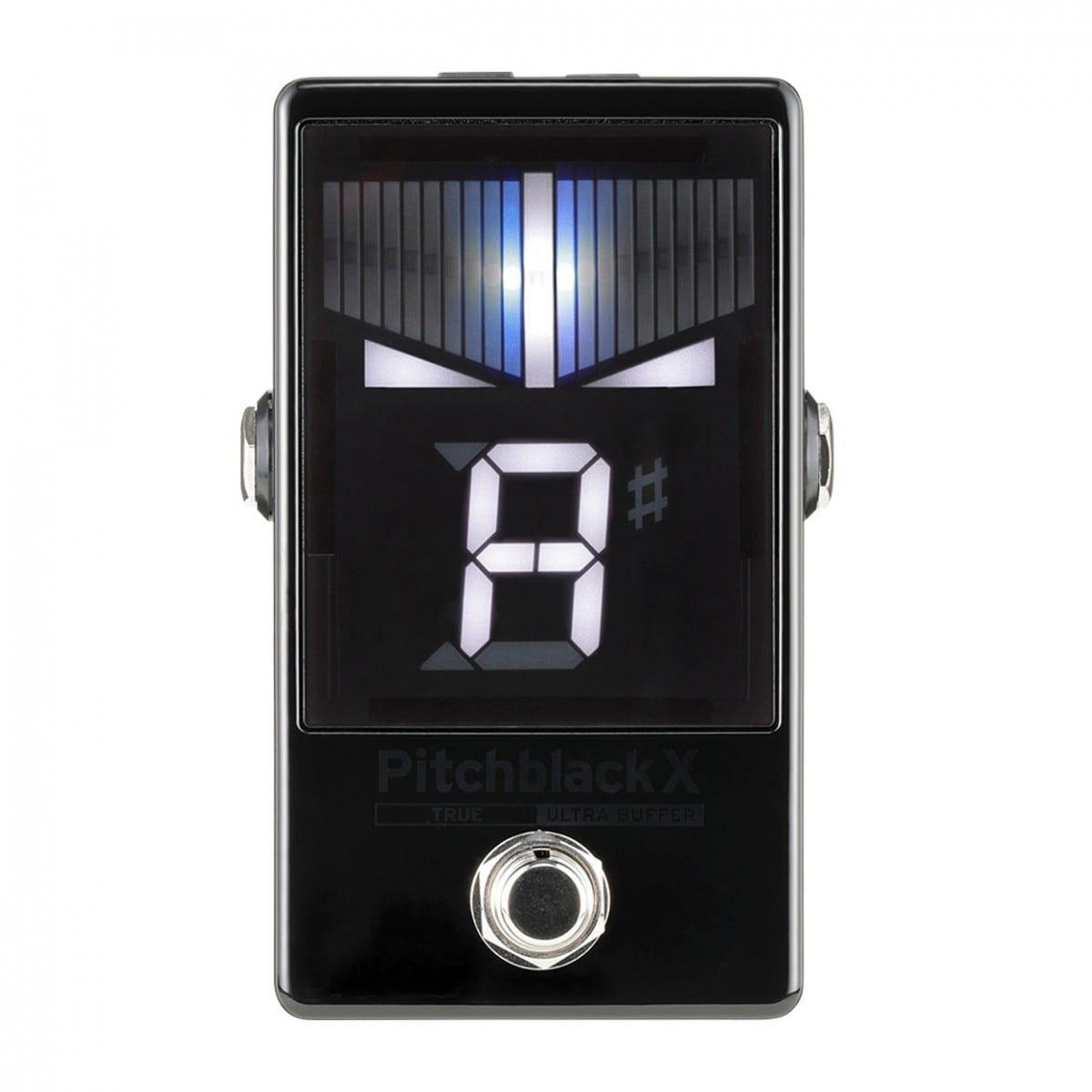
A Guitar Tuner Pedal is an essential tool for guitarists to accurately tune their instrument. It’s a pedal-shaped device that helps ensure the strings are at the correct pitch, allowing for precise tuning before practice, recording, or live performances.
Functionality of Guitar Tuner Pedals
Visual Display:
Tuner pedals typically feature an easy-to-read LED or LCD display that shows the pitch of the played string. This display often indicates whether the note is in tune, flat, or sharp.
Signal Input and Output:
Guitarists connect their instrument to the input of the tuner pedal, and the output routes to the amplifier or another pedal in the signal chain. When tuning, the guitarist mutes their output to ensure only the tuner receives the signal.
Tuning Modes:
Many tuner pedals offer different tuning modes, including chromatic, guitar, bass, and sometimes alternate tuning options, catering to various instruments and tuning preferences.
Usage of Guitar Tuner Pedals
Step 1: Connection:
Connect your guitar to the input of the tuner pedal using a standard 1/4-inch instrument cable.
Step 2: Tuning Process:
Activate the tuner pedal by pressing the footswitch, then pluck a string. The display will show the pitch of the played note.
Step 3: Adjusting Tuning:
Tune the string by adjusting the tuning peg until the displayed pitch aligns with the desired note. The display typically indicates whether the note is in tune, sharp, or flat.
Step 4: Tuning All Strings:
Repeat the process for each string, ensuring all strings are correctly tuned to the desired pitches.
Types of Guitar Tuner Pedals
Chromatic Tuners:
Chromatic tuners are versatile and can tune to any pitch, allowing for tuning to standard, alternate, or even non-standard tunings. They detect and display all 12 notes in the chromatic scale.
Polyphonic Tuners:
Polyphonic tuners can tune all strings at once, displaying the tuning status of each string simultaneously. This type allows for faster tuning of multiple strings.
Strobe Tuners:
Strobe tuners offer incredibly high accuracy by utilizing a rotating disc or LED that slows down or stops when the note is in tune. They’re known for their precision but may require a learning curve due to their detailed display.
Suggested Models of Guitar Tuner Pedals
Boss TU-3/TU-3S:
The Boss TU-3 and its compact version TU-3S are durable, accurate chromatic tuners known for their robust build and reliability.
TC Electronic Polytune 3:
The Polytune 3 is a polyphonic tuner allowing for quick tuning of all strings at once. It features a bright display and true bypass.
Peterson StroboStomp HD:
For musicians seeking high precision, the StroboStomp HD is a top-notch strobe tuner known for its accuracy and detailed display.
Korg Pitchblack Advance/Poly:
Korg’s Pitchblack series offers reliable chromatic tuning with a clear display. The Pitchblack Poly version is polyphonic, allowing for quick tuning of all strings.
Conclusion
Guitar Tuner Pedals are essential tools for every guitarist, ensuring accurate tuning and pitch calibration. The choice between different types and models depends on personal preferences, tuning needs, and desired features such as accuracy, display clarity, and additional functionalities like polyphonic tuning. Investing in a quality tuner pedal ensures that your guitar remains in tune, facilitating better sound quality and enhancing overall musical performance.

